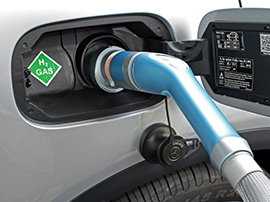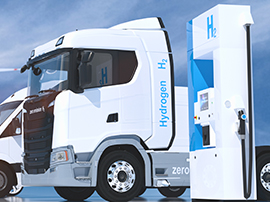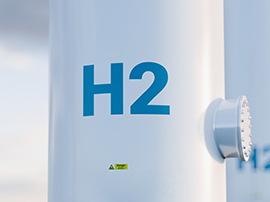Hydrogen opportunities: Key findings

Developing a low-carbon hydrogen economy is a strategic priority for Canada. Low-carbon hydrogen can play a key supporting role alongside electrification to decarbonize our economy. It also plays an essential role in meeting global energy needs in the context of energy security, the energy transition and the broader climate imperative. It can help diversify our future energy mix, generate economic benefits and achieve net-zero greenhouse gas emissions by 2050. Canada has all the ingredients necessary to develop a competitive and sustainable low-carbon hydrogen economy. The research and consultations that led to Canada’s Hydrogen Strategy (2020) and the Progress Report (2024) highlighted how we can get there.
Key principles of the Hydrogen Strategy
In our research and consultations, the following cross-cutting themes emerged.
- Momentum: The interest in hydrogen is growing throughout the world. Canada has a burgeoning hydrogen industry that gives us a significant competitive advantage
- Signature projects: Increased focus can be brought to the creation and implementation of large-scale projects that could be highlighted and promoted internationally
- Domestic deployment: Canada needs a strong domestic hydrogen market to support decarbonization opportunities and seize international opportunities
- Low carbon intensity: As the market grows, so should our focus on ensuring that hydrogen is produced using methods that have the lowest environmental impact
You can read more about how these themes will apply to different segments of the hydrogen value-chain below.
Production
Canada is rich in feedstocks such as water, electricity, fossil fuels and biomass. Coupled with our skilled labour force and our strategic energy assets, Canada is well positioned to become a top global producer of clean hydrogen. The scale of projected hydrogen demand requires development of all low-carbon intensity pathways across the country, and each region will have a unique mix of production based on local resources and economic factors.
Distribution and storage
Canada has many innovative ways to distribute and store hydrogen. Canada’s extensive natural gas pipeline network, combined with new storage (including subsurface) and distribution assets, can be leveraged to move hydrogen from production to end-use locations.
Transportation
Increased infrastructure investments can incentivize the adoption of zero-emission vehicles, including a coordinated hydrogen refuelling infrastructure investment plan, focused on regional hubs. High profile, medium- and heavy-duty fuel cell electric vehicle pilot projects are helping raise awareness and best practices for pilot deployments of zero-emissions vehicles for goods and people movement in all sectors: on-road, rail, marine, and aviation.
Feedstocks for industry
Hydrogen can be used as an energy source and feedstock in many industrial processes. For example, it is an essential component for oil sands upgrading and can be used to decarbonize steel manufacturing. Hydrogen is also a key element in the production of ammonia and fertilizer for agricultural purposes, thereby reducing the carbon intensity associated with agricultural production. There is opportunity in identifying synergies between hydrogen and other bio-based renewable fuels, as well as in creating a market for low-carbon products being used in domestic infrastructure.
Heat and power
To encourage the decarbonization of natural gas networks, the first steps would be to safely increase hydrogen blending into the natural gas grid and to develop a suite of public tools and resources to increase awareness and to help end-users evaluate hydrogen options. Blending low-carbon intensity hydrogen into Canada’s natural gas networks, for use in both industry and the built environment, provides a significant demand opportunity for hydrogen.
Cleantech and innovation
Canada is a leader in hydrogen and fuel cell technologies. There is a need for sustained support for innovation across the value chain to ensure Canada maintains its competitive edge. Activities can be coordinated through regional research centres that leverage specific expertise, support for innovative companies, and through fundamental collaborations between public- and private-sector researchers, domestically and internationally.
A growing opportunity
Hydrogen made through Canada’s clean and abundant resources and diverse pathways has the potential to deliver a valuable portion of our end-use energy by 2050. Projections show that this supply of low-carbon hydrogen could be a viable and economical decarbonization option in hard-to-abate sectors such as medium and heavy-duty transportation (trucks, buses), or heavy industry (refining petrochemicals, steel), where electrification alone would be less economical or technically unfeasible.
With worldwide demand for hydrogen increasing, the global market could reach over $1.9 trillion by 2050. Each region of Canada can utilize their unique resources to produce and deploy hydrogen domestically as well as to supply a growing export market. Based on their existing country strategies, demand potential, and proximity, Europe, Asia, and the United States have been identified as potential export markets for Canadian clean hydrogen.
Page details
- Date modified:






